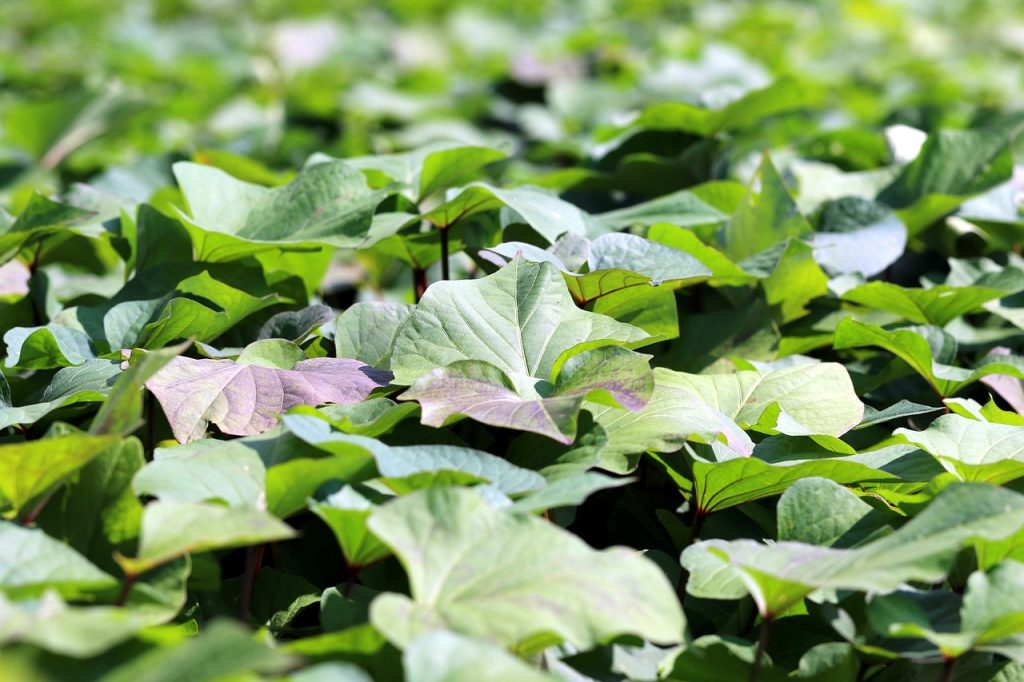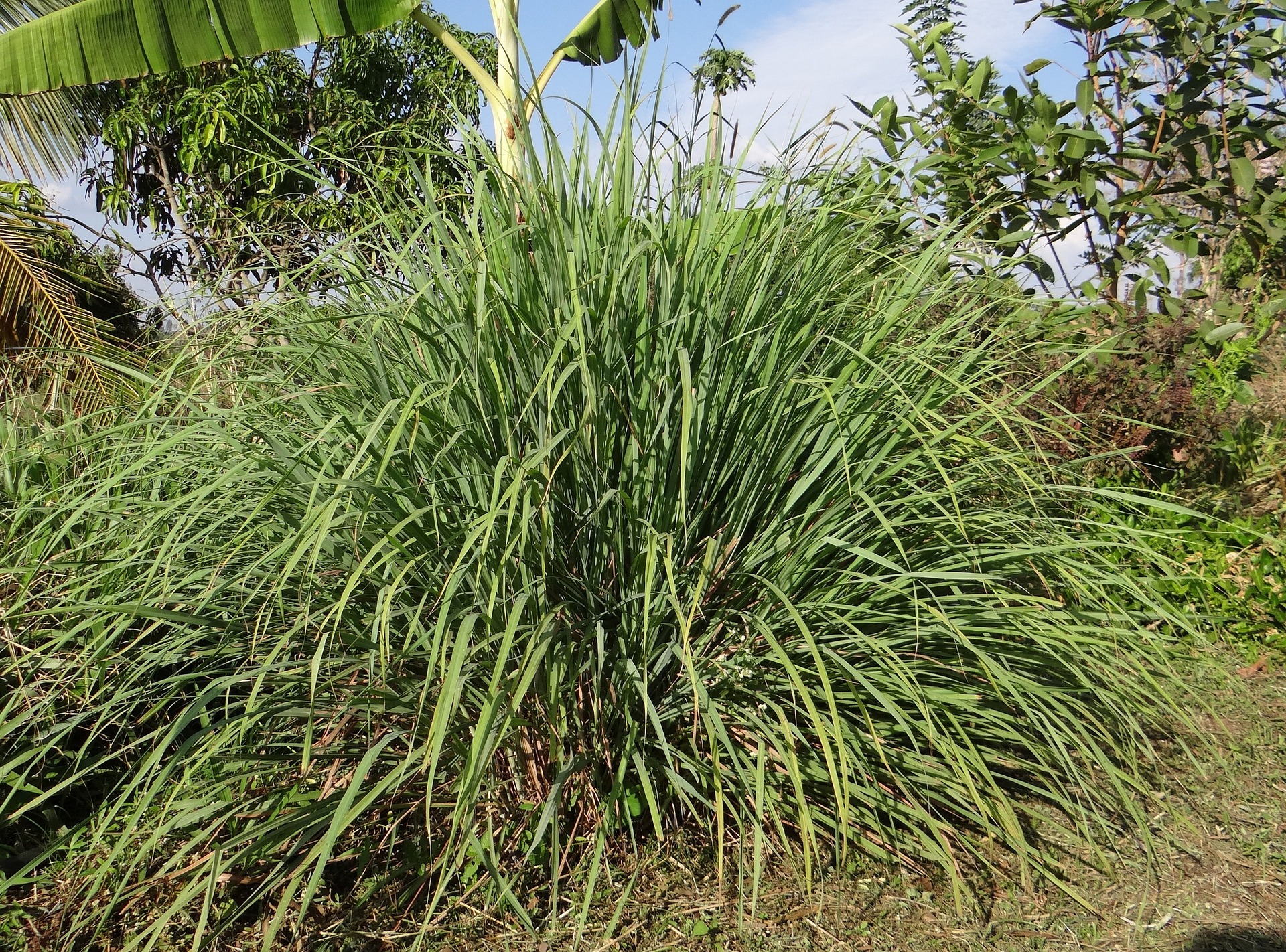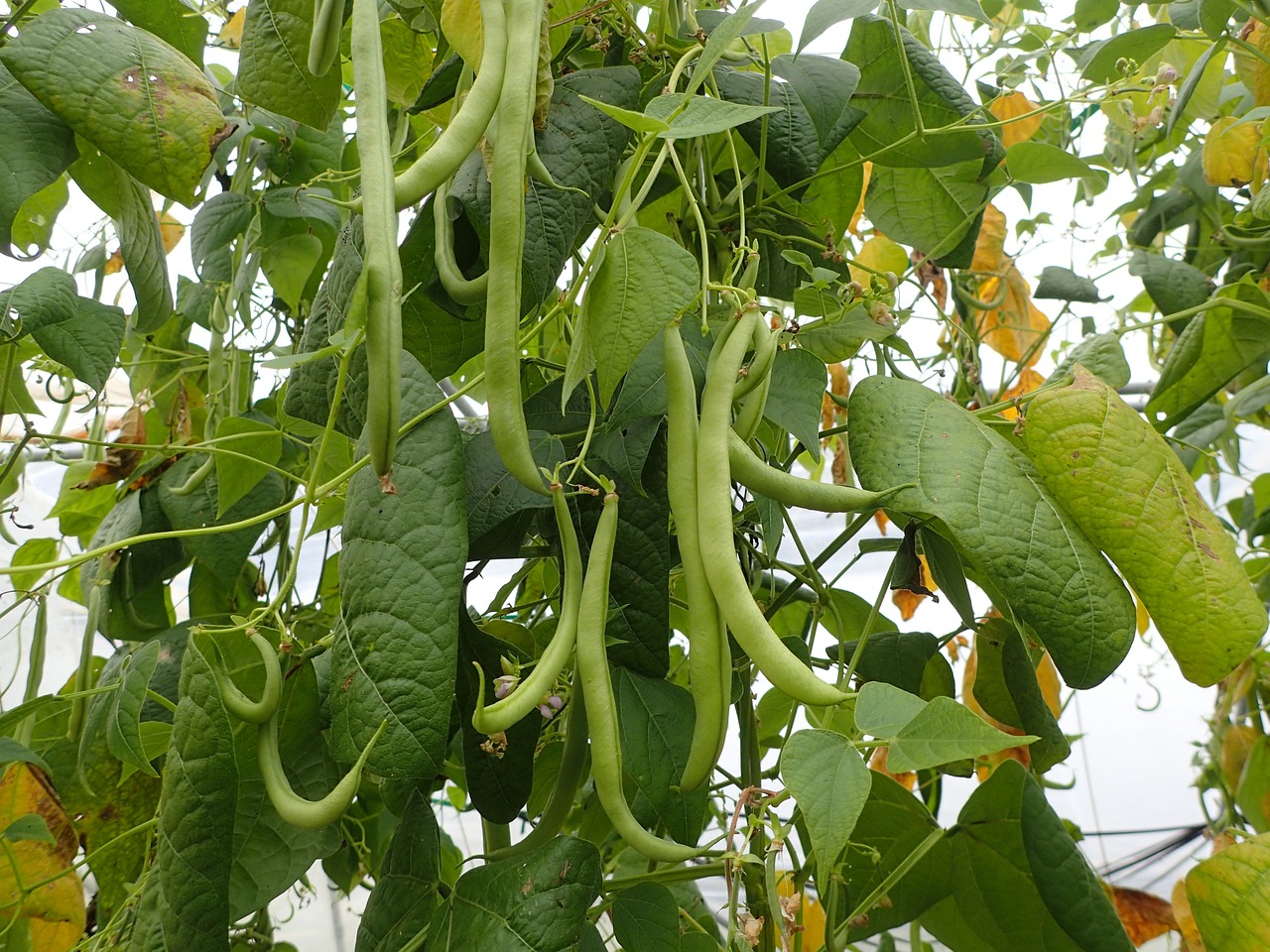Sweet potatoes are relatively easy to grow plants and offer a delightful combination of sweetness, mildness, and versatility, making them a popular choice for both sweet and savory dishes.
Whether roasted, mashed, fried, or baked, sweet potatoes provide a unique flavor experience that appeals to a wide range of palates.
Here is a complete guide on how to grow and care for sweet potatoes:

Description
Sweet potatoes are herbaceous root vegetables which grow naturally as perennials but are cultivated as annuals for their edible roots. They belong to the family Convolvulaceae and are native to the Americas.
Sweet potato plants produce long , trailing vines that spiral across the ground or climb up supports if provided. Vines produce simple leaves and numerous funnel shaped flowers whose color varies from white to lavender.
Sweet potato tubers develop underground and come in various shapes, sizes and colors. The flesh and skin can range from white to orange, yellow or purple.
Sweet potatoes are highly nutritious. They are rich in vitamins and minerals, particularly vitamin A (in the form of beta-carotene), vitamin C, manganese, and potassium. They are also a good source of fiber and antioxidants.
| Botanical name: Ipomea batatas | Propagation: Cuttings |
| Common name: Sweet potato | Soil type: Sandy, Sandy loam |
| Family: Convolvulaceae | Soil pH: 5.8-6.5 |
| Plant type: Perennial, annual | Temperature: 70°F to 80°F |
| Hardiness zones: USDA zones 9-11 | Light: Full sun |
| Leaf color: Green, yellow-green, purple | Spacing: 12-18in. |
| Root color: White, yellow, purple, orange | Pollination: Insects |
| Time to harvest: 90-170 days | Toxicity: Non toxic |
| Native area: Americas |
Sweet potato varieties to grow
Jewel: Jewel sweet potatoes have a deep orange flesh and a sweet, moist texture. They are known for their high yields and resistance to diseases.
Centennial: Centennial sweet potatoes have smooth, copper-colored skin and deep orange flesh. They also have a sweet, nutty flavor and are excellent for mashing or baking.
Beauregard: This is one of the most widely grown varieties and is known for its excellent flavor, high yields, and resistance to cracking. It matures relatively quickly and produces uniform, medium-sized tubers with orange flesh.
Japanese Purple: Also known as Murasaki sweet potatoes, Japanese Purple varieties have purple skin and creamy white flesh. They have a slightly sweet flavor and are popular for their unique appearance.
Carolina Ruby: Carolina Ruby sweet potatoes have deep red-orange flesh and a sweet, moist texture. They are versatile and can be used in a variety of dishes.
Covington: Covington sweet potatoes have rose-colored skin and deep orange flesh. They are known for their excellent flavor and high yields.
Temperature requirements
Sweet potatoes require warm soil to germinate and grow successfully. The optimal soil temperature for planting sweet potato slips is between 70°F to 80°F (21°C to 27°C). Planting when the soil has warmed to this temperature ensures faster germination and establishment of the plants.
Sweet potatoes are highly sensitive to frost and cold temperatures. Exposure to temperatures below 50°F (10°C) can cause damage to the foliage and tubers. Ensure to plant sweet potatoes after the danger of frost has passed in the spring and harvest them before the first frost in the fall.
Soil requirements
Sweet potatoes require well-drained soil to prevent waterlogging, which can lead to root rot and other diseases. Sandy loam or sandy soil with pH between 5.8 and 6.5 is ideal for cultivating sweet potatoes. Conduct a soil test before planting to ensure that the pH of your soil falls within this range. If the soil is too acidic, you can raise the pH by adding lime. If it’s too alkaline, you can lower the pH by incorporating organic matter such as compost or peat moss.
Light/Sun requirements
Sweet potatoes thrive in full sun, which means they require at least 6 to 8 hours of direct sunlight each day for proper growth and development of foliage and tubers.
When to plant Sweet potatoes
Sweet potatoes thrive in warm soil temperatures. Wait until the soil temperature has warmed up to at least 60°F (15°C) before planting sweet potato slips or tubers. The best time for planting is during late spring or early summer.
In tropical and subtropical regions, sweet potatoes can be planted at any time of the year. Plant preferably during the rainy season, so that the plants can benefit from the rains.
Garden preparation
Remove any rocks, weeds, or debris from the planting area to ensure a clean planting environment.
Improve soil fertility by incorporating organic matter such as compost, aged manure, or composted leaves into the soil. This will provide essential nutrients and improve soil structure.
Dig mounds or raised beds to improve soil drainage and increase warmth. Mounds should be about 8 to 12 inches high and spaced 3 to 4 feet apart. This elevated planting method helps prevent waterlogging and promotes better root development. Giving the plants enough room to spread out will encourage healthy growth and maximize yields.
Planting
Sweet potatoes are usually grown from slips, which are young shoots that grow from mature sweet potatoes. You can purchase slips from nurseries or garden centers, or you can sprout your own slips from a mature sweet potato.
Plant sweet potato slips in the prepared soil, burying them about 3 to 4 inches deep. You can plant 2-3 strips per mound and space them evenly.
Water newly planted slips thoroughly to help them establish roots.
How to Care for Sweet potato plants
Watering: Keep the soil consistently moist but not waterlogged, especially during the first few weeks after planting and during dry periods. Avoid overwatering, as soggy soil can lead to rot and disease.
Fertilization: Sweet potatoes are moderate feeders and benefit from regular fertilization throughout the growing season. Apply a balanced fertilizer or compost tea every 3-4 weeks to promote healthy growth.
Mulching: Apply a layer of mulch, such as straw, shredded leaves, or grass clippings, around the base of the plants. Mulch helps retain soil moisture, suppresses weeds, and regulates soil temperature.
Watering: Water newly planted sweet potatoes thoroughly to help settle the soil around the roots. Afterward, water the plants regularly to keep the soil evenly moist but not waterlogged. Sweet potatoes require consistent moisture, especially during the initial stages of growth.
Weed Control: Keep the planting area free from weeds by regularly pulling them by hand or using a hoe them. Mulching helps suppress weed growth, but it’s important to monitor the area and remove any weeds that emerge.
Harvesting Sweet potatoes
Sweet potatoes are typically ready for harvest 90 to 170 days after planting, depending on the variety and growing conditions. Harvest sweet potatoes before the first frost in the fall by carefully digging them up with a garden fork. Handle them gently to avoid bruising or damaging the tubers.

Curing and Storage
After harvesting, cure sweet potatoes by allowing them to dry in a warm, humid location for about 10 to 14 days. This process improves flavor and helps the skins toughen for storage. Store cured sweet potatoes in a cool, dry, dark place with good ventilation, where they can last for several months.
Pests and Diseases
Pests: Watch out for pests like sweet potato weevils and wireworms. Use pest traps or bait to control pests.
Diseases: Sweet potatoes can be susceptible to diseases like root rot and fusarium wilt. Planting disease-resistant varieties and practicing crop rotation can help prevent diseases.




